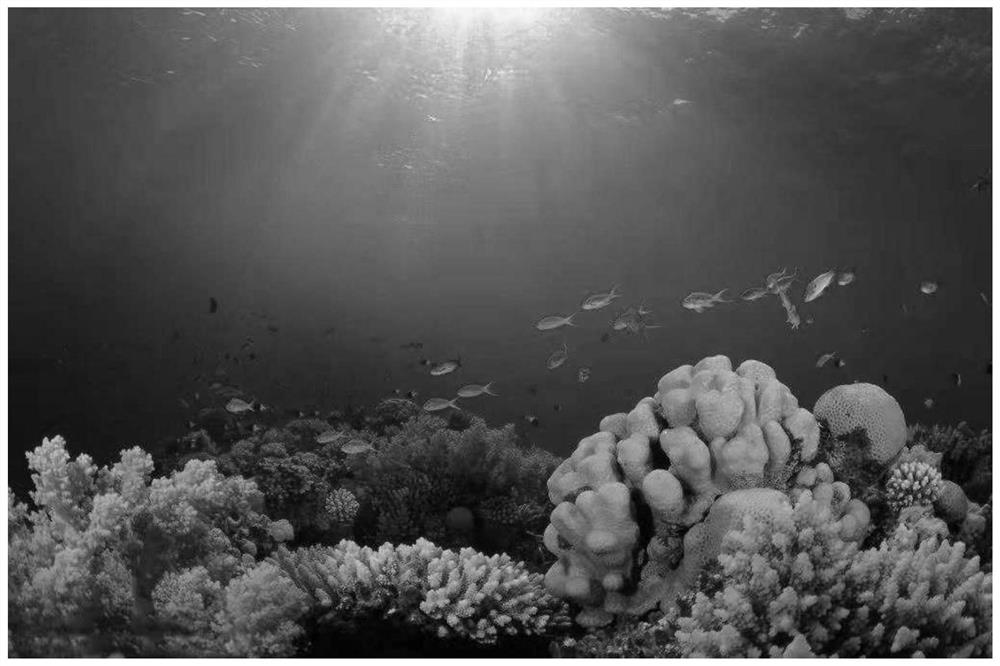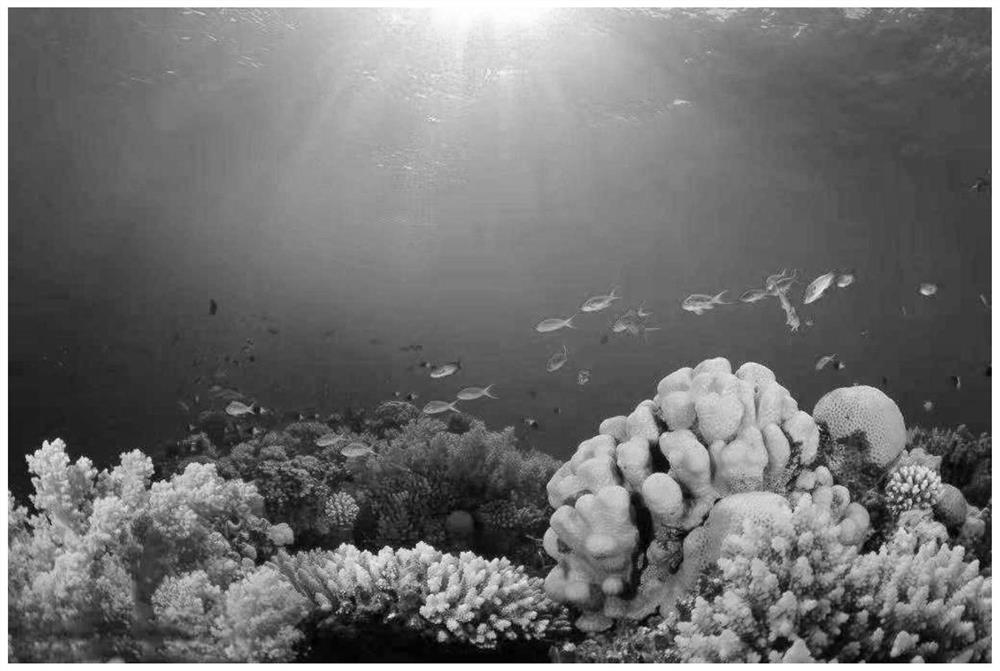Nonlinear underwater image gain algorithm for hyperbolic tangent deformation function transformation
A deformation function, hyperbolic tangent technology, applied in image enhancement, image analysis, image data processing and other directions, can solve the problems of difficult to guarantee generalization ability, unsatisfactory effect, limited degree of image restoration, etc., to achieve low time delay The effect of gain conversion
- Summary
- Abstract
- Description
- Claims
- Application Information
AI Technical Summary
Problems solved by technology
Method used
Image
Examples
Embodiment
[0061] 1. to figure 1 As an example, the specific method and steps of image processing in the present invention are shown.
[0062] First obtain the underwater image as figure 1 As shown, the observation found that the brightness of the image is seriously insufficient, and the overall dark, especially the corals and fish schools in the middle and lower part of the image belong to the dark part and transition area of the entire image, the color scale range is very narrow, and the image details are difficult to distinguish. The main goal of the gain task is to process the image using the nonlinear underwater image gain algorithm transformed by the hyperbolic tangent transformation function to achieve the following goals: on the premise that the high light area above the middle is not overexposed, the distant coral and fish areas (Dark parts and transition areas) The color scale range is widened, showing image details and improving the entire image.
[0063] S100: Read image ...
PUM
 Login to View More
Login to View More Abstract
Description
Claims
Application Information
 Login to View More
Login to View More - R&D
- Intellectual Property
- Life Sciences
- Materials
- Tech Scout
- Unparalleled Data Quality
- Higher Quality Content
- 60% Fewer Hallucinations
Browse by: Latest US Patents, China's latest patents, Technical Efficacy Thesaurus, Application Domain, Technology Topic, Popular Technical Reports.
© 2025 PatSnap. All rights reserved.Legal|Privacy policy|Modern Slavery Act Transparency Statement|Sitemap|About US| Contact US: help@patsnap.com



